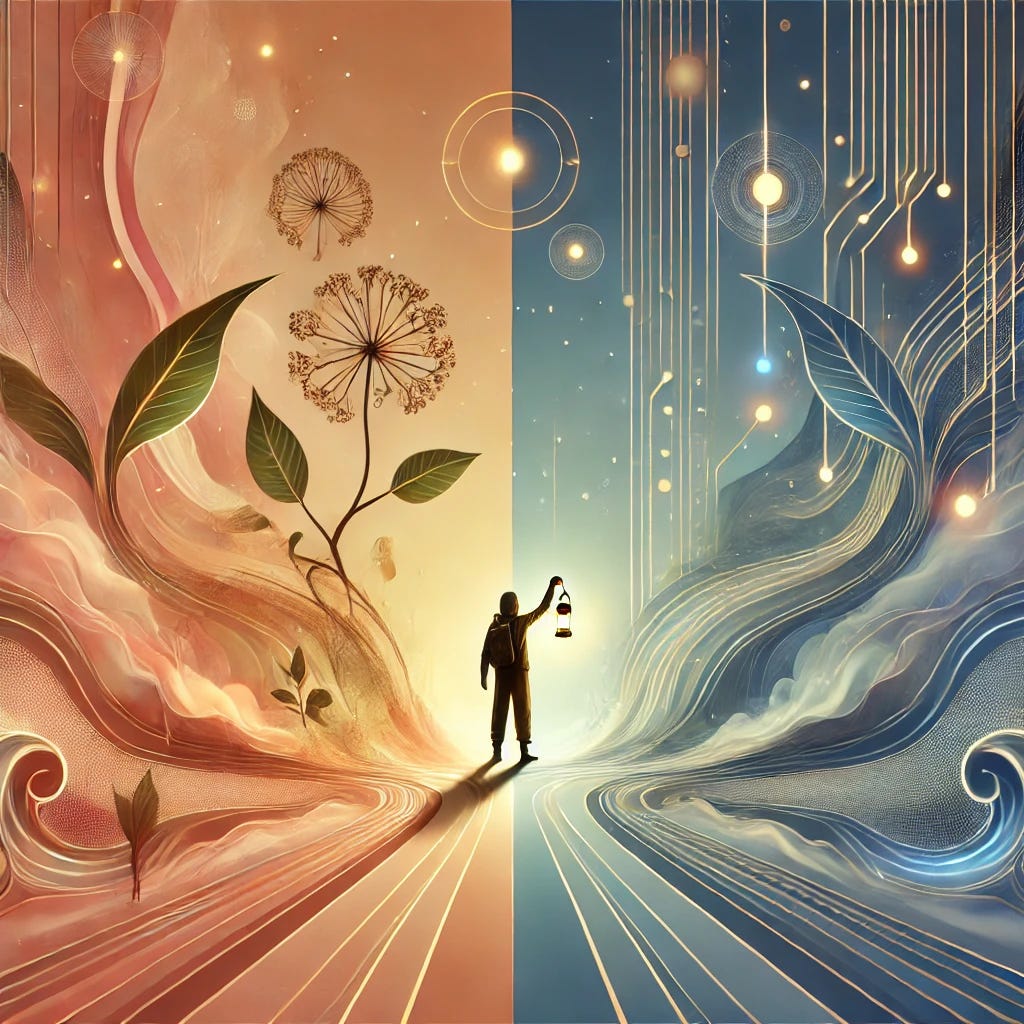Designing for Autonomous AI: The Next Evolution in Experience Design
Human Patterns in the Machine Age | Issue #11
The design world stands at a fascinating inflection point. As AI evolves from following fixed workflows to becoming truly autonomous agents, we face a fundamental shift in how we think about experience design. No longer are we designing solely for human users - we're creating experiences for a dual audience of humans and machines.
Understanding AI Agents: A New Kind of User
AI agents are defined as "autonomous systems that sense and act upon their environment to achieve goals" (World Economic Forum, 2024) combining reasoning, logic, and access to external information.
Think of traditional AI systems as GPS devices following predetermined routes - reliable but inflexible. Now imagine instead an autonomous driver, capable of making real-time decisions, adapting to unexpected obstacles, and even choosing entirely new paths.
This is the evolutionary leap we're witnessing in AI, from rigid workflows to autonomous agents with sophisticated cognitive architectures that enable reasoning, planning, and independent decision-making. These AI agents interact with our designs and systems in fundamentally different ways from humans.
Where human users skim, scan, and make intuitive leaps based on emotional responses and past experiences, AI agents systematically process multiple data streams through structured frameworks like ReAct, Chain-of-Thought, and Tree-of-Thoughts (Google, 2024). This fundamental difference in how machines and humans consume and process information demands a complete rethinking of our design principles.
The Birth of Machine Experience (MX)
Just as we've spent decades refining user experience (UX) design for human needs, we must now develop a parallel understanding of machine experience (MX). This isn't about treating human and machine users as mutually exclusive…rather, it's about creating experiences that serve both effectively.
Consider how a human processes a product page versus an AI agent. A human might be drawn to compelling imagery, scan headlines, and respond to emotional triggers.
An AI agent, however, systematically processes structured data through various tools and frameworks. Google's research shows that modern AI agents can handle multiple data types simultaneously, from structured documents like PDFs and spreadsheets to unstructured content like HTML and text files (Google, 2024). Both need to understand the product, but they absorb and process this information in radically different ways.
Designing for Human-Machine Duality
This dual-audience reality requires us to expand our understanding of "user-centered" design. Traditional personas capture human goals, behaviors, and pain points. But we must now consider what the World Economic Forum calls "cognitive architectures" - the combination of models, tools, and orchestration layers that determine how AI agents perceive and act upon their environment (WEF/Capgemini, 2024).
The challenge is not in creating separate experiences for humans and machines, but in designing unified interfaces that serve both audiences effectively. This might mean developing layered experiences where human-friendly interfaces contain machine-readable metadata, or creating adaptive systems that respond differently based on the user type.
Technical Implications and Challenges
The technical implications of this shift are profound. Information architecture must evolve to support both human cognitive patterns and machine processing requirements.
As evidenced by Google's development of Extensions, Functions, and Data Stores, we're already seeing the emergence of sophisticated tools that enable AI agents to interact with external systems and data in ways that parallel human information processing (Google, 2024).
Beyond adding metadata or improving API documentation, it’s about fundamentally rethinking how we structure and present information in a world where machines are active users rather than passive tools.
The whitepaper “A Primer on the Evolution and Impact of AI Agents” highlights how AI agents can now engage in complex multi-step reasoning and planning, requiring us to design experiences that support both immediate actions and longer-term goal achievement.
The Future of Design Practice
As we move into this new agentic AI era, designers must expand their toolkit. Understanding machine learning principles, data structures, and AI behavior patterns becomes as crucial as knowing human psychology and user behavior.
The emergence of multi-agent systems, where multiple AI agents collaborate to solve complex problems, suggests we need to design not just for individual interactions but for entire ecosystems of human and machine intelligence.
Looking Forward
The future of design lies in creating experiences that effectively serve both humans and machines. The technical foundations are already being laid through platforms like Vertex AI agents, which provide production-ready frameworks for building sophisticated AI agent systems (Google, 2024).
As we stand at this frontier, the questions we face are both challenging and exciting.
How might we maintain human-centricity while optimizing for machine interaction?
How might we measure success when designing for human-machine duality?
How might we ensure ethical considerations are met for both human and machine users?
The answers to these questions will shape the future of experience design. As we move forward, one thing is clear: the successful designers of tomorrow will be those who can effectively bridge the gap between human and machine users, creating experiences that enhance both human capability and machine efficiency.
The question isn't whether to design for humans or machines - it's how to design for a future where both coexist and collaborate effectively. This is the next great challenge in experience design, and it's one that will define our field for years to come.
Sources:
Navigating the AI Frontier: A Primer on the Evolution and Impact of AI Agents, World Economic Forum & Capgemini, December 2024
Agents, Julia Wiesinger, Patrick Marlow and Vladimir Vuskovic, Google, September 2024
🙏 Thank you for reading Strategic Humanist. If you enjoyed this article, share it with others who may find it valuable. Subscribe for future articles delivered straight to your inbox.
🤔 Curious about the Strategic Humanist?
I'm a lead CX strategist that helps Fortune 500 companies craft customer-focused solutions that balance business priorities, human needs, and ethical technology standards. My work focuses on keeping humans at the center while helping organizations navigate digital transformation.
Connect with me on LinkedIn to explore more insights on human-machine collaboration, customer experience, and ethical applications of AI.


